
In two parts, HKFP’s Ilaria Maria Sala shares unseen photos from the 1989 Tiananmen protests. Click here for part two.
By the standards of Beijing in 1989, 10 pm was very late. The evenings were quiet.
The gate at Bei Shi Da, the short-form name for Beijing Normal University, was locked shut just before 10. If for any reason one was still out, it took a bit of banging on the metal to wake up the shifu sleeping on a berth in a hut next to it.
He would stir and get up, and let us in with a reproachful look. We smiled guiltily and apologised, but were too young to mean it.
Everyone was known as shifu: the man at the gate, the one at the entrance of the Foreign Students Dormitory, the one who looked at our comings and goings from a little office just by the door, and the couple who knew everything about us.
They took turns writing in a large book all the phone calls we wanted to make, whether local or international, and would call us loudly for all to hear every time we were wanted on the telephone. They made sure to shout the name of our caller, too, in case we fancied our privacy.
And they feigned not to understand if we asked if this was necessary. Only today I see that cheekiness as a small prank in an otherwise odd and dull job. Maybe any hint of secrecy was best dispelled as soon as possible, too.
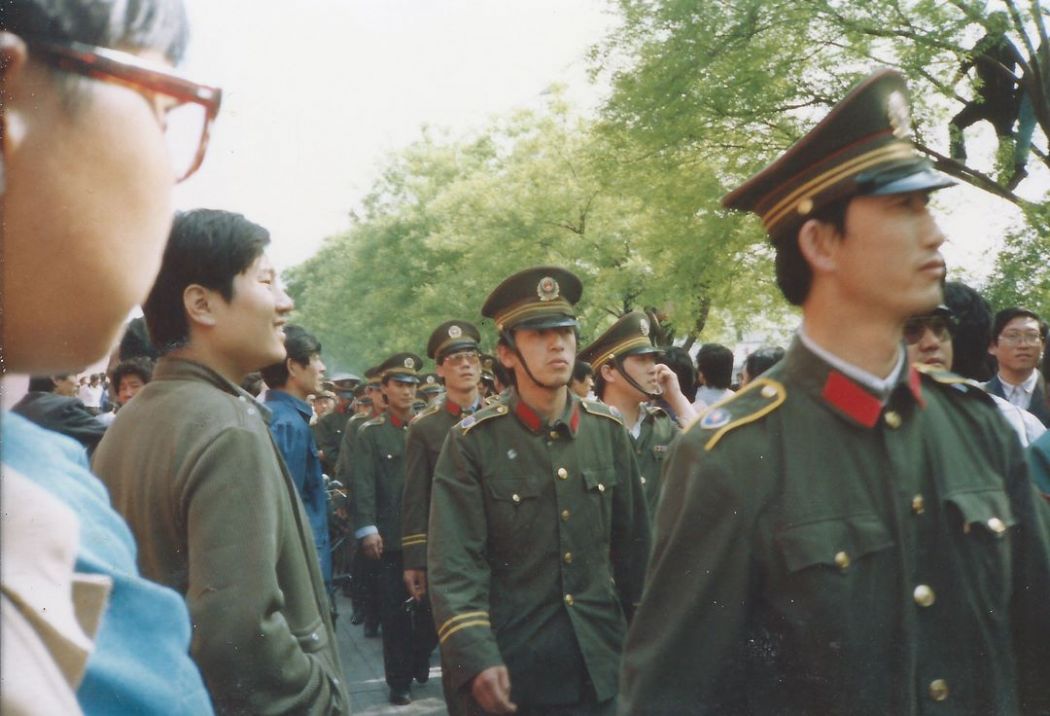
Most shifus wore surplus army clothing. Green or blue canvas jackets and trousers, practical and full of pockets, not without a certain utilitarian charm.
Everyone had been wearing them until June 4th. Then the green ones got burned in the street in tall angry piles after the army crushed the student protests in June 1989 in the centre of Beijing.
People would line the large avenues with open pyres on which they threw everything that had been so useful but belonged to the army. The trousers and the jackets, the sneakers and the caps, even the heavy padded winter coats and the hats lined with synthetic fur for Beijing’s harsh winters. Some people even threw blankets, towels and enamelled basins in the fires.
That gesture, that throwing. So full of pain. Of disbelief and rage.
The shifus at my university too switched to the blue ones, as the Navy hadn’t tainted itself, it hadn’t taken part in the filicide. Many people didn’t have a lot else to wear, so they wore the blue uniforms instead.
I am getting ahead of my recollections.
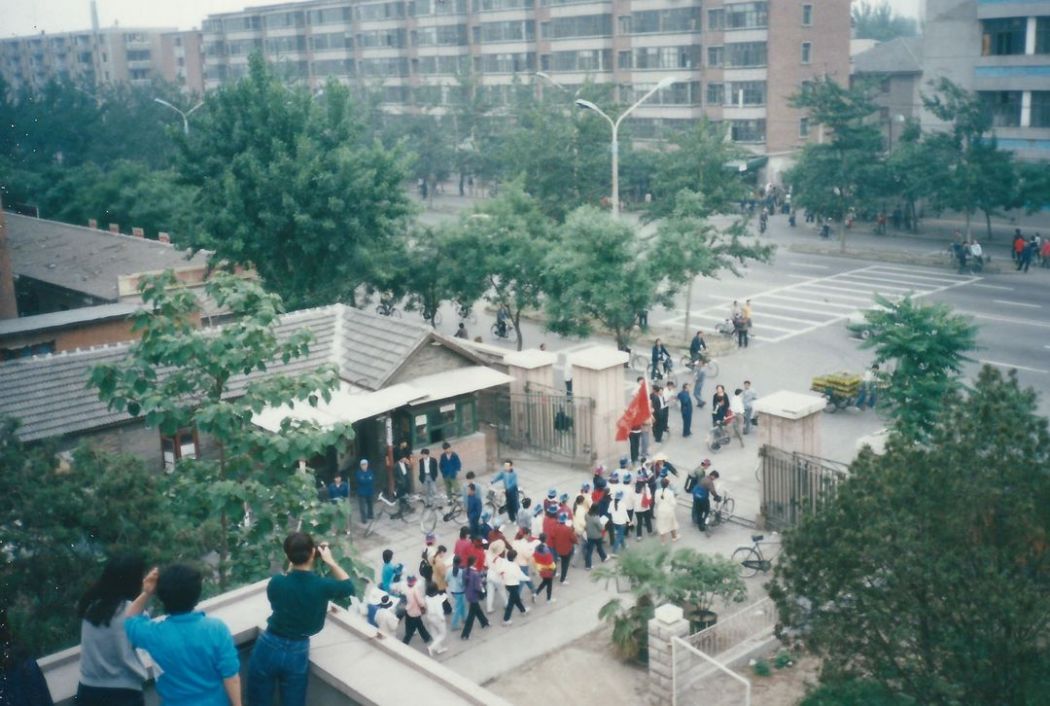
April 16th, 1989, at night. I was sitting in my room in the silent dorm, memorising my daily quota of Chinese characters before going to bed. Unusual sounds filtered through, and I went to the balcony facing Xin Jie Kou Street, the large north-south avenue that back then was lined with poplar trees.
In the dimly-lit night I could see people marching, some chanting slogans, and calling at students from Bei Shi Da to join along. I went downstairs to see what was happening, and went out to ask those marching what was going on. One of the shifus called me by my Chinese name, and said: — Lan Ruiya! You mustn’t go!
I answered I was just going to talk to the people at the door, but by then so many others were there that even the all-seeing eyes of a Beijing university’s shifu had too many faces to follow.
It was a couple of hundred students, maybe more, from the three universities further north: Peking University, Tsinghua, and People’s University. They said they were going on to Tiananmen, because Hu Yaobang had died. He was a hero, they said. He had to be remembered by the students, because he had been disgraced for siding with them, they said.
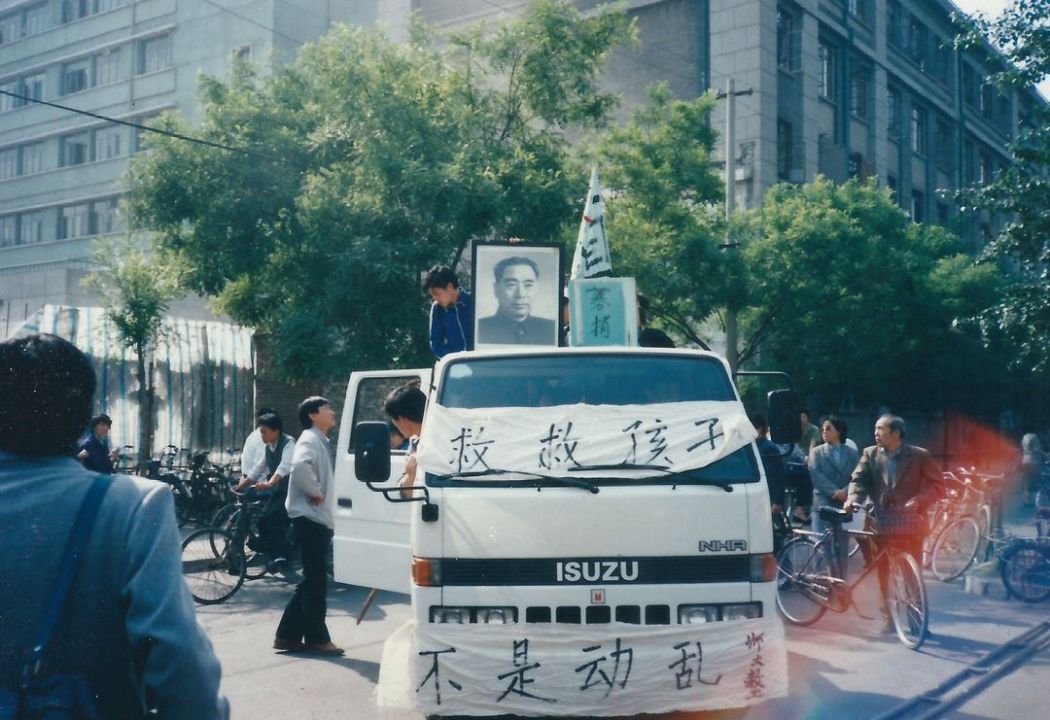
Hu Yaobang had seemed destined to be Deng Xiaoping’s successor, until two years previously, when students in Beijing had taken to the streets demanding reforms and he had come out to defend them. And with them he went down. He was removed from the post of General Secretary of the Communist Party and was sent into early retirement.
The students regarded him as a reformist, unjustly sidelined, and a man who would have steered the country in a better direction: less corruption, less nepotism, more political openness.
One of those marching in the night said the students didn’t want the Party to orchestrate a low-profile funeral. Hu deserved full honours. He deserved to be rehabilitated, he said. That strange word that still resonates today, 29 years after, as people still ask the Party to change its verdict on its own actions.
Rehabilitate Hu Yaobang. Rehabilitate Zhao Ziyang (the reformist successor of Hu, who would be disgraced, in turn, by his support of the students in 1989). Rehabilitate the protests of 1989. Rehabilitate the dead of those protests. Like sufferers of Stockholm Syndrome.
Shortly afterwards a few foreign correspondents came and asked us questions – did we see the protesters? Where did they go? Why were they protesting? How many were they?
They had been jolted into late night overdrive as something so rare as a public protest was taking place, and nobody knew it would become a fixture in the landscape for nearly two months.

People would march to Tiananmen square more and more frequently, more and more openly. Some by then were asking for an inquiry into Hu’s death: was it really a heart attack? What had they done to him? Was his heart made weak by the suffering the Party had imposed on him?
The Beijing Spring was making everyone sneeze, as the poplars shed their fluffy white pollen, carried by the wind like dry snow.
But we were all out, all the time. On April 21st another night march passed in front of Bei Shi Da. This time everyone joined; the students feared that the authorities would prevent them from taking part in Hu Yaobang’s funeral, as they had received a notification that Tiananmen Square would be sealed off.
So they decided to go the night before, and spend the night there, and be sealed in. As I walked along, trying to learn fast, I was told under which banner to stay. Everybody marched under a large banner, and a smaller one: one’s institution, or danwei, was the large banner, and whichever section or department or class one belonged to was defined by the smaller ones.
And around the marchers, a self-styled security service held hands. “In this way, if someone is not supposed to be here, they will spot it immediately,” said someone from my year, sounding knowledgeable.

The immensity of Tiananmen Square swallowed thousands upon thousands of students. I was under the Monument to the People’s Heroes, following orders from my seniors, as they had decided that it was the most protected spot, should the armed police decide to clear the square.
Nobody slept. As the night ended a thin line of soldiers came out of the Great Hall of the People and encircled it. Then another. And another. More soldiers made more lines, blocking the exit from the square and access to the building. We all watched, wondering what they would do.
They sat down, staring in front of them, as the thousands took photos and tried to talk to them, to cheer, or to mourn. After a few hours a few dignitaries walked up the steps of the Great Hall of the People in order to take part in the funeral being conducted inside. They all turned to look at the crowded square – should they wave? Should they ignore it all? Was this solemn, or disorderly?
Three students moved forward and across the lines of soldiers, and knelt down on the steps to give a petition letter: I strained my neck to see, as a defiant crowd indulged in a feudal ritual of humility. Kneeling in front of the authorities they were disobeying, begging for what they considered their indisputable right.

People around the Monument to the Heroes started leaving messages and flowers that they attached to the marble reliefs. Others pasted Hu Yaobang’s portrait.
The crowd dispersed slowly after the funeral, sombre and victorious. Nobody had been hurt. Hu Yaobang belonged to the students. He was theirs to commemorate.
The gate at Bei Shi Da had become a crowded place. Students would march out of it and join the protests that soon happened on a daily basis。From the canteen, the cooks and the waiters all left with banners and flags and joined the marchers.
From a nearby kindergarten, the teachers tied the children’s wrists with a red ribbon, and formed a line of linked-up toddlers along a metal barrier to make them see the students protesting. I have often wondered if those toddlers, now in their early 30s, have any memories of those scenes, and of that red ribbon.
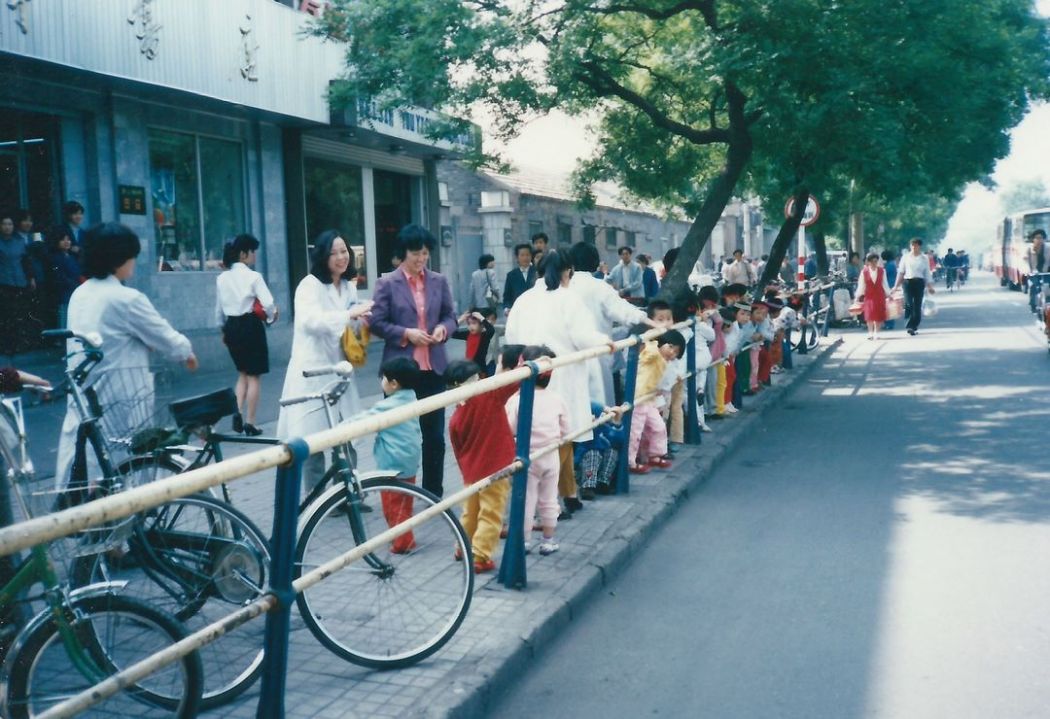
On April 26th, an editorial in the People’s Daily condemned the protests, calling them an anti-Party revolt and disturbances. It made people angry, and they decided they would march even more.
The day after, this decision turned into a huge protest. It snaked from the universities in the north-west of the city to the centre of Beijing, as people kept joining at every step. The soldiers that had been dispatched to patrol the streets tried to prevent the protesters from passing through, but when the crowd got too large they gave way. Again nobody got hurt. And anger gave way to triumph.
It was no longer only about Hu Yaobang, even if by now his portrait dominated the square, watching over the protesting students like a huge black-and-white icon. He hadn’t been able to protect them before, when he was alive. Was his towering image going to protect the students now?
May Fourth, the anniversary of the most important student protests in modern Chinese history, against the weak Nationalist government’s response to the Treaty of Versailles, arrived. The streets had promised one million marchers on the square. The People’s Daily editorial had become a target of the protesters’ anger, together with demands for reform, democracy, economic and political openness.
It was a party of young people made dizzy by hope and determination, their eyes aflame, as they climbed on pickup trucks holding high the handwritten banners with the name of their school: Central Institute of Singing and Drama. Beijing’s Chinese Medicine Institute. Central Academy of the Arts. Tsinghua. Peking University. Peking Normal University.

One banner said: “The news must report the truth.” Everyone was outside, watching the students commemorate May Fourth 1919 with new marches. People were on top of the tallest buildings and the pedestrian bridges, climbing up on top of trees, and on anything elevated – even the Bei Shi Da’s gate – looking down in awe and hope, uncertain of the future.
Down in the square, those demonstrating were looking up, as countless helicopters circled above.
People marched holding hands, again careful to recognise each other.
The square was everybody’s daily visit.
On foot and by bicycle, by bus and by pick-up truck, scores of people went to check out what was happening and join concerts and debates. The soldiers kept watch in front of the Forbidden City, but nothing happened. Strong words from the authorities backfired, and were followed by large marches.
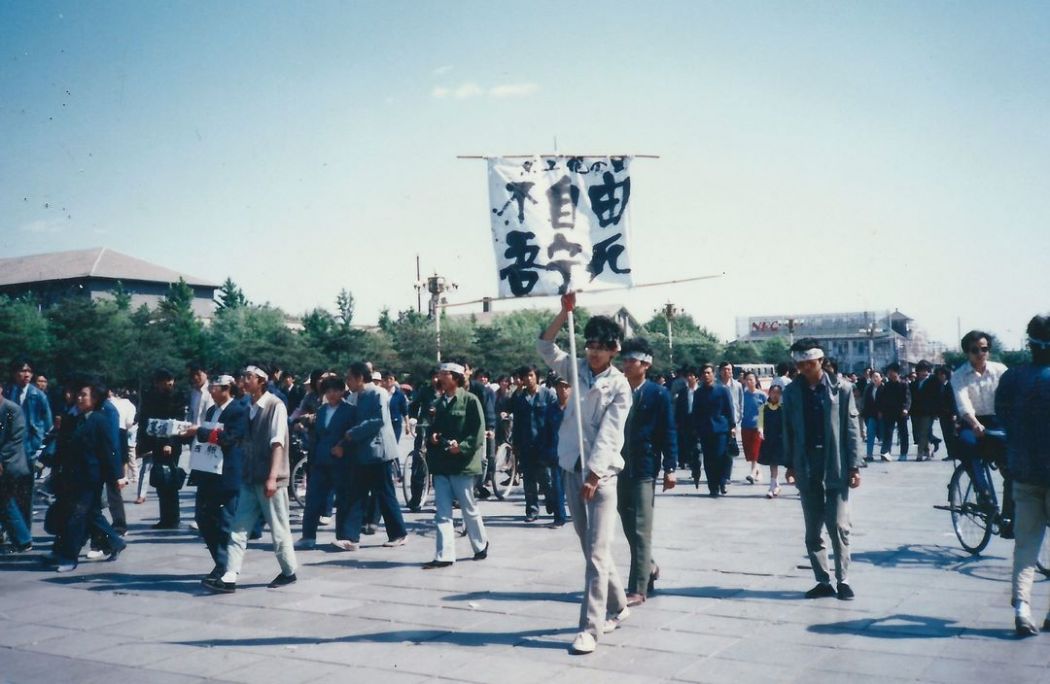
On May 13th the students decided to force things with a hunger strike on the square. I went down to Tiananmen the day after, and saw that some volunteers had organised a lifeline for those who felt unwell to be rescued by doctors and ambulances. In the days that followed, the hunger strike looked theatrical and heart wrenching.
Many students started to faint, tents appeared in the occupied square, and stationary buses turned into the headquarters of various self-organised groups. Daytime and nighttime, people came to the square to talk to the students, to bring them water and food and medicine, to support them and to tell them to take care.
The press had started to print stories very close to the truth, as journalists and newspapers decided they had the opportunity of their lives.
A week later martial law was declared in Beijing, and the press was firmly muzzled again.
The newspapers printed on the days before became precious, as students and citizens brought them to the soldiers that were stationed at every street corner: “these are our students,” they told them: “do not believe they are staging riots. They are not counterrevolutionaries. They are our students.”
Old ladies sat in front of the soldiers. When it rained, people sat in the tents, or cycled down, or took the bus – and got drenched. Motorcycle and taxi drivers joined in the voluntary patrols, baptising themselves “The Flying Tigers.” Grannies and granddads patrolled the streets at night, all of them like improvised watchmen and women, ready to raise the alarm if anything dangerous was happening.
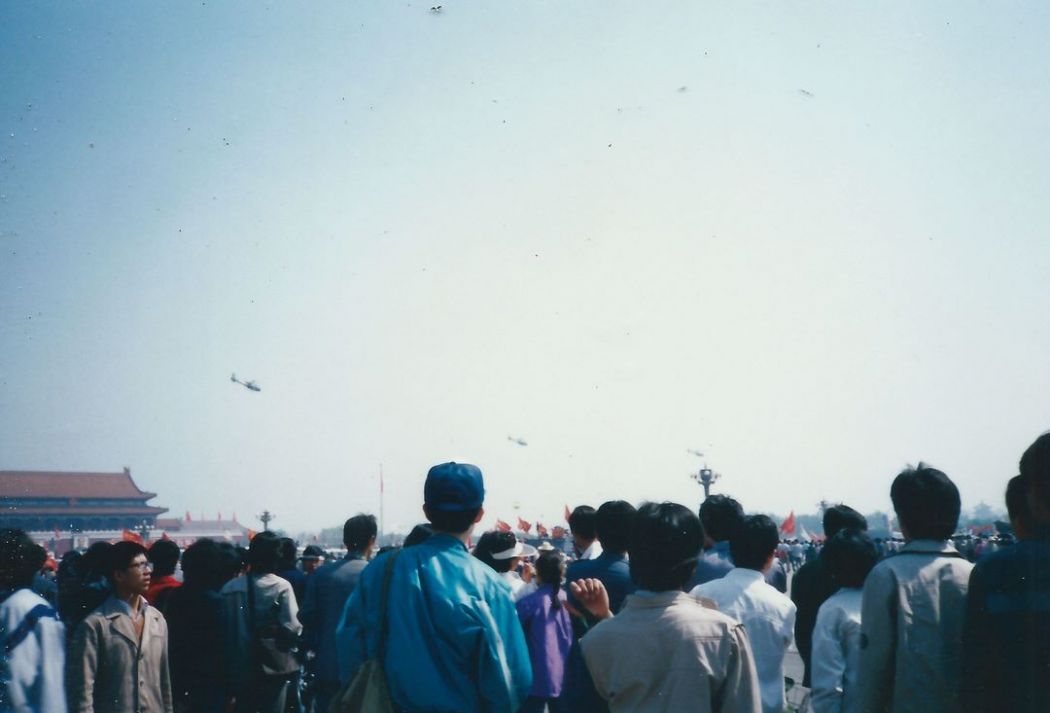
And it did. It started on the evening of June 3, when a group of striking workers were beaten up. Then the violent reckoning didn’t stop for days.
The army moved in – not the same soldiers that had taken food, water and advice from old Beijing citizens, but fresh troops who hadn’t seen, hadn’t read, hadn’t heard. They shot and killed. They crushed with their tanks. They shocked a whole city, a whole country. The whole world. The fires started – with the burning of tanks and of debris, and of army clothes. And of dreams.
The extraordinary images of the days before this crackdown – the flags and the determination and the crowds – seemed unbelievable just a few days after they were taken. But you can see their reality.
